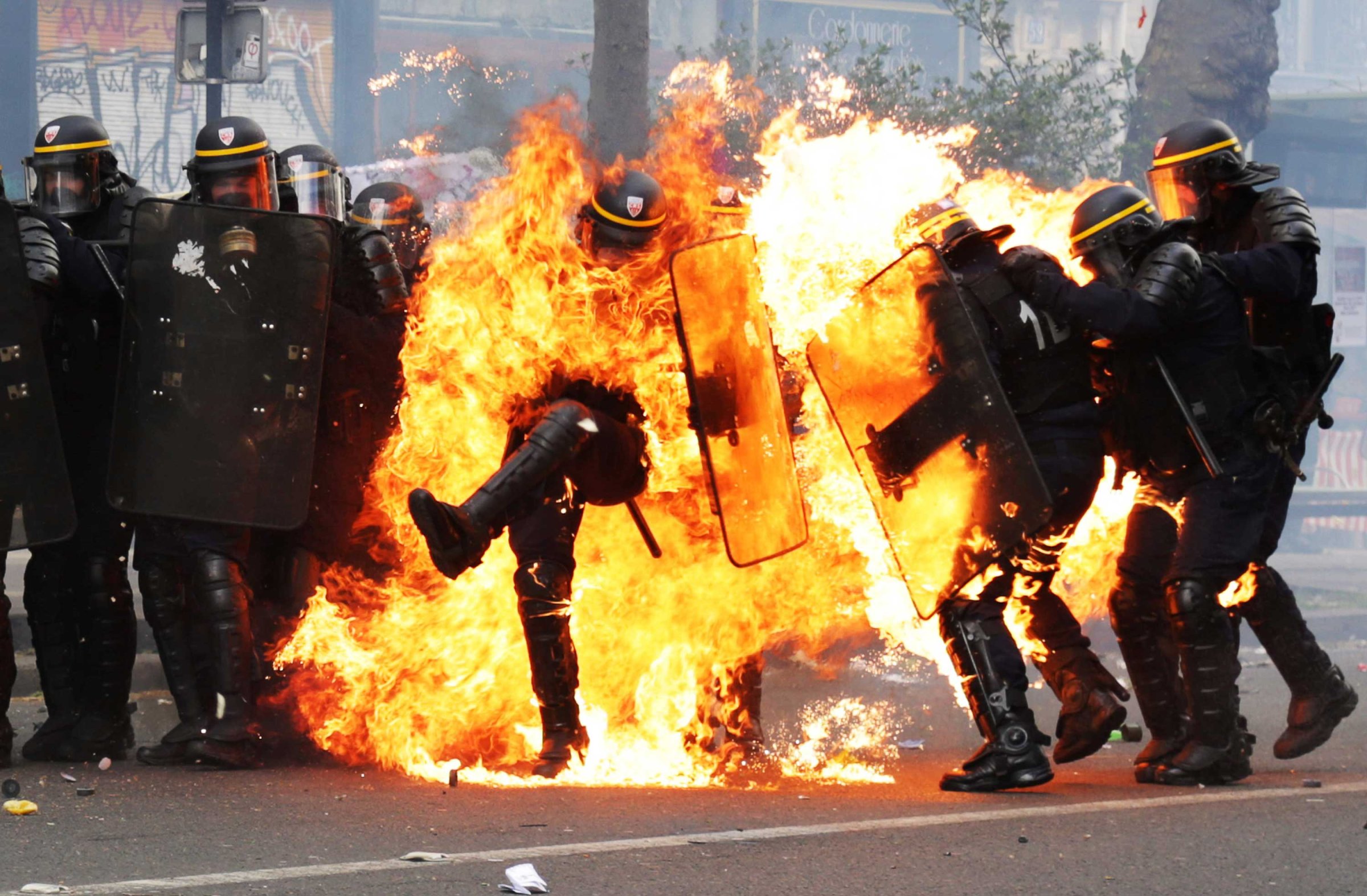
The photograph is commanding. As anti-riot police officers patrol the streets of Paris, one of them is hit by a Molotov cocktail during the May Day protests in Paris. Six-foot-high flames engulfed the man as several of his colleagues recoil from the intense fire.
The photograph made the front pages of the New York Times and the Wall Street Journal, as well as many other newspapers across Europe. Its creator: Zakaria Abdelkafi, a photographer with Agence France-Presse and a Syrian refugee, who was forced to flee his country in 2015.
On May 1, Abdelkafi was covering the protest, following a group of people that had chosen to hide their faces under hoodies and behind bandanas.
“I always follow them because, from past experience, I know they always cause trouble,” he says in a recorded interview with AFP. “They’re very violent.”
Over the past week, as Abdelkafi covered protests against the two leading presidential candidates, he’s also fallen victim to their attacks.
“Several times, they pushed me down to the ground and beat me,” he says.
Yesterday, as the demonstrations started taking a turn for the worse, Abdelkafi positioned himself between the protesters and members of the police force called CRS — for Republican Security Companies. As projectiles started flying toward the police officers, “I thought to myself how the police were really the victims here,” says Abdelkafi, “because these guys were attacking them. They were throwing stones and glass bottles at them, anything that they could get their hands on.”
Abdelkafi didn’t see the Molotov cocktail coming.
“I saw the fire and I just snapped away,” he says. “I kept on following the policeman who was burning. In that picture, he is trying to kick a tear gas canister back at the demonstrators.”
Abdelkafi heard him screaming.
“The officers around him were screaming, too,” he says. “That policeman really touched me. He was being burned alive in front of me. And the demonstrators, they didn’t care. They kept throwing things at the police.”
The 41-year-old police officer, who remains unidentified, suffered third-degree burns to his hands and neck, as well as second-degree burns to the face.
The photographer hopes he’ll be able to meet with the police officer.
“I would like to go see him in the hospital and bring him flowers,” says Abdelkafi, who lost an eye when covering the war in his native Aleppo.
That was two years ago. It changed his life, bringing him to Paris, where he received his asylum and a job at AFP.
Olivier Laurent is the editor of TIME LightBox. Follow him on Twitter and Instagram @olivierclaurent
More Must-Reads From TIME
- The 100 Most Influential People of 2024
- Coco Gauff Is Playing for Herself Now
- Scenes From Pro-Palestinian Encampments Across U.S. Universities
- 6 Compliments That Land Every Time
- If You're Dating Right Now , You're Brave: Column
- The AI That Could Heal a Divided Internet
- Fallout Is a Brilliant Model for the Future of Video Game Adaptations
- Want Weekly Recs on What to Watch, Read, and More? Sign Up for Worth Your Time
Contact us at letters@time.com